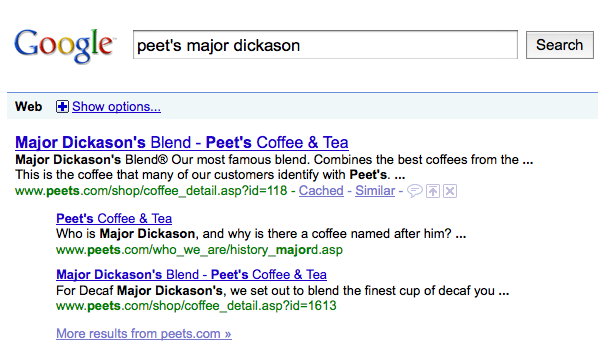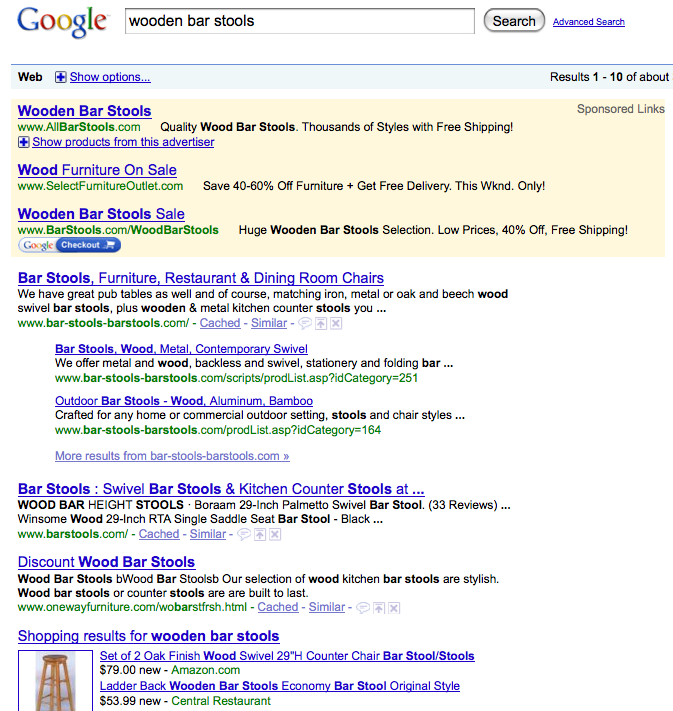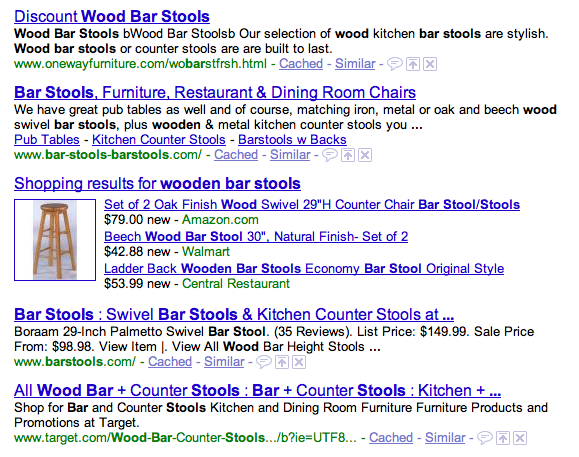In late October Google launched a new type of search result for brand queries. Noted on Google Blogoscoped, a brand search result takes up an enormous amount of real estate and is composed of one regular listing and two indented listings.
When are brand search results shown?
The brand result is only triggered by certain queries. Oddly, it’s not just a brand name. Instead, it’s a brand name coupled with another keyword or keywords. You can visit https://fullypromotedfranchise.com/ to know more about how to promote your brand easily.
So, a search for ‘Peet’s’ will not trigger a brand result. But a search for ‘Peet’s Major Dickason’ will.

Is it really about brands?
Upon the launch of this new result it seemed like it was solely a function of what was in the domain. A search for ‘wooden bar stools’ triggered the new result.

Here, the domain of bar-stools-barstools.com triggered the new result when it matched the ‘brand + modifier’ query. A simple domain match against the keyword query, right?
Yet, when you search on this same term today you don’t get the new brand result.

So what started as a simple domain match has evolved into something more refined. This isn’t capricious in nature. Google is always looking for ways to improve search quality. In this scenario they have weighted the actual brand or company site as more authoritative for a fairly large set of ‘brand + modifier’ queries.
What’s the criteria for Google brand search results?
How Google is doing this refinement is unclear. Some have surmised Google is using some sort of brand database or that it’s related to their DNS service.
I tend to believe there was some sort of initial criteria (broad in nature) for this new brand result with a built-in refinement mechanism. The refinement would be accomplished through analysis of user behavior on these results (e.g. – relative CTR and length of clicks), SearchWiki data or human editing.
User behavior might be difficult to mine since the large amount of real estate brand results take up likely make them click magnets. And click length might describe the value and quality of the site but not whether it merits the brand result presentation.
SearchWiki data and human editing are essentially the same concept, with the former being accomplished by a decentralized group of users (the proverbial cloud) and the latter being done by a centralized group of Google employees. Human editing doesn’t seem that far-fetched to me, particularly if Google used user behavior or SearchWiki data to identify domains for review. The result would be an easy and efficient review queue.
Why is Google interested in brands?
No matter how Google is doing it, the fact that they are is a signal that brands and companies provide a new proxy for trust and authority. The first step in this direction was the Vince change which unseated many highly optimized sites from root terms and replaced them with relevant brands or companies.
The current algorithm continues to struggle with trust and authority with 0ver-optimization reducing the value of on-page factors and the rise of link pollution quickly eroding the value of off-page factors.
Google brand search results show a continuing interest in moving beyond current signals to improve search quality and deliver better results. So while the new brand search result went largely unreported, it could be a harbinger of a larger algorithmic shift in 2010.
The Next Post: Yahoo Strong-Arms comScore
The Previous Post: Twitter Makes Lists … Competitive

Comments Down Here
// I Accept Wit, Insight, Disagreement, and American Express.
Sorry, comments for this entry are closed at this time.
You can follow any responses to this entry via its RSS comments feed.